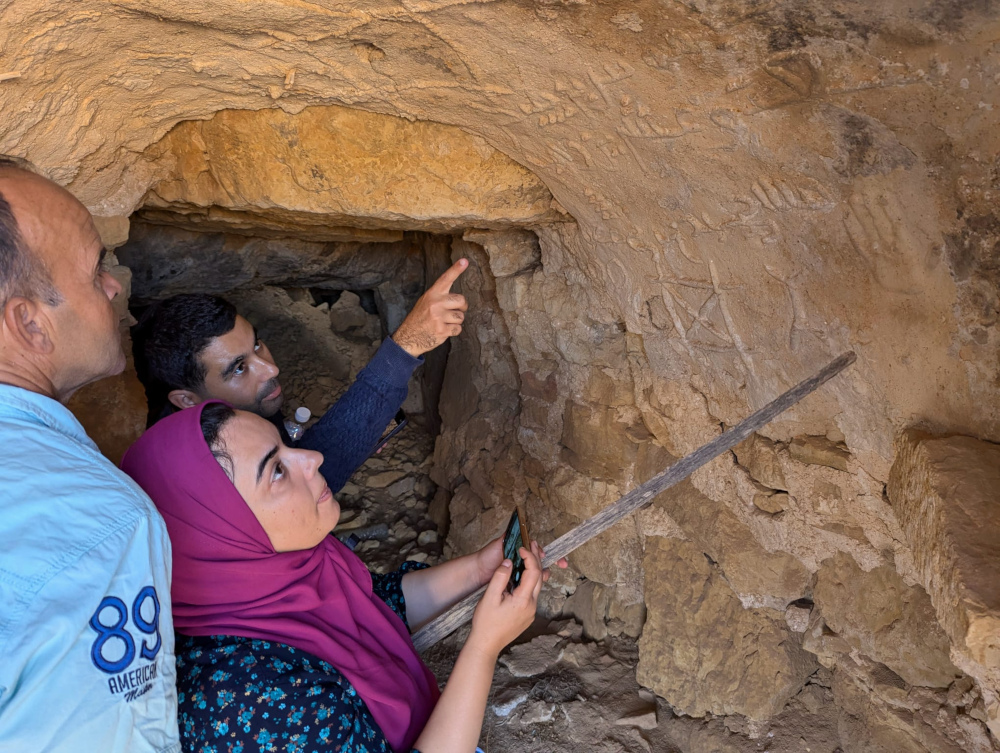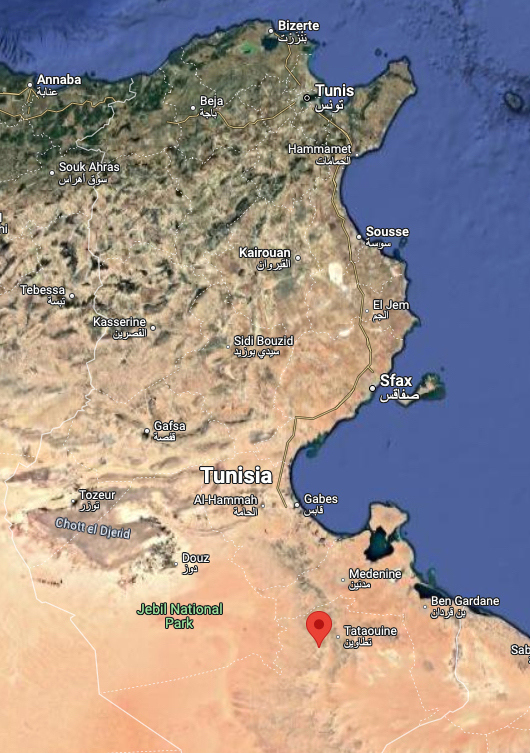

CHI Update: Ksar Douiret: First Steps Down the Path
Feb. 4, 2025 | By Darren P. Ashby | ASOR Cultural Heritage Programs Manager
For many, the name Tatooine evokes the arid landscape of the desert planet that plays such an important role in the “Star Wars” universe. However, the iconic places and landscapes of this fictional world are built upon the very real history, culture, and environment of Tunisia’s Tataouine Governorate. Located at the southern tip of Tunisia, the region of Tataouine has been inhabited for millennia by the Amazigh people, whose traditional settlements of fortified communal storerooms and semi-subterranean homes dot the countryside. Over the past century, the progressive abandonment of many of these spaces has led to their collapse and ruin. However, their continued importance to the Amazigh communities who built them and to Tunisians of all backgrounds who celebrate them as examples of Tunisia’s rich and deep history is reflected in more recent local efforts to preserve and protect them in coordination with Tunisia’s Institut National du Patrimoine (INP).

A project startup meeting at the INP in October 2024 with, from right to left, Director Tarek Baccouche (INP), Dr. Hanan Charaf (ASOR), and Executive Director Dr. Andrew G. Vaughn (ASOR).
Since October 2024, ASOR and its partners at the Douiret Women’s Association (Wakry Association) (DWA) have been working to protect and celebrate Ksar Douiret, one of the most iconic ksars, or fortified villages, in Tataouine Governorate, with support from the U.S. Department of State’s Ambassadors Fund for Cultural Preservation. For at least a thousand years, Ksar Douiret was a critical stopping point on a trans-Saharan trade route stretching from the Mediterranean to the Niger River valley. The ancient town comprises two main parts. The village, or “al Dashara,” is characterized by a series of adjacent rock-cut homes forming a belt along the side of the mountain, as well as two historic mosques, the Jemaa al Kerma in the west and the Jemaa al Nakhla in the east. Above the residential portion of the community is the “Ghasro,” or ksar of Douiret. It is strategically situated on a butte overlooking the wide valley below and offers considerable natural advantages for defense. The ksar was a communal space divided into small storage rooms to safely keep supplies and crops, including dates, olives, grain, and oil.
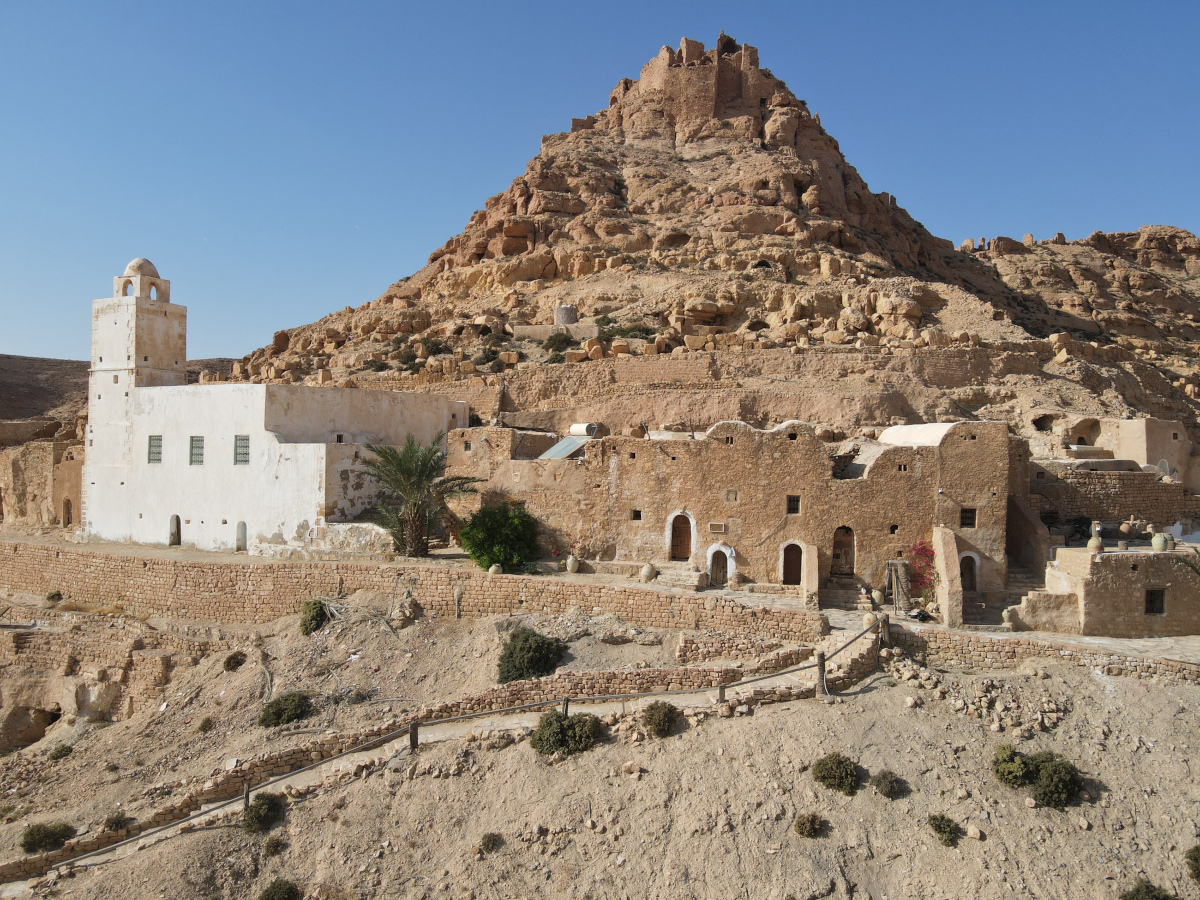
Ksar Douiret and its surroundings. Jemaa Al Nakhla mosque is the white building to the left with Ksar Douiret visible on the hill in the background. Photo Credit: ASOR.
As early as the 17th century, Douiret’s residents began to migrate to the capital of Tunis and elsewhere as the trans-Saharan trade waned and the economic fortunes of southern Tunisia deteriorated. Following this gradual decline, the ancient settlement was almost entirely abandoned by the local community as Tunisian government policy changes in the 1980s incentivized them to move to a new town with upgraded infrastructure. The community maintained its connection to the site and its embodiment of their heritage despite their departure.
In the current project, ASOR and its partners seek to stabilize and expand access to key portions of the ksar, building momentum for more ambitious conservation projects in the future. The work focuses on restoring safe access to the ksar and the two mosques as well as hosting a series of community heritage events. Such events celebrate Ksar Douiret and the Amazigh heritage that it represents, as well as provide an opportunity for the Douiret community and the Tunisian public to see the work in progress.
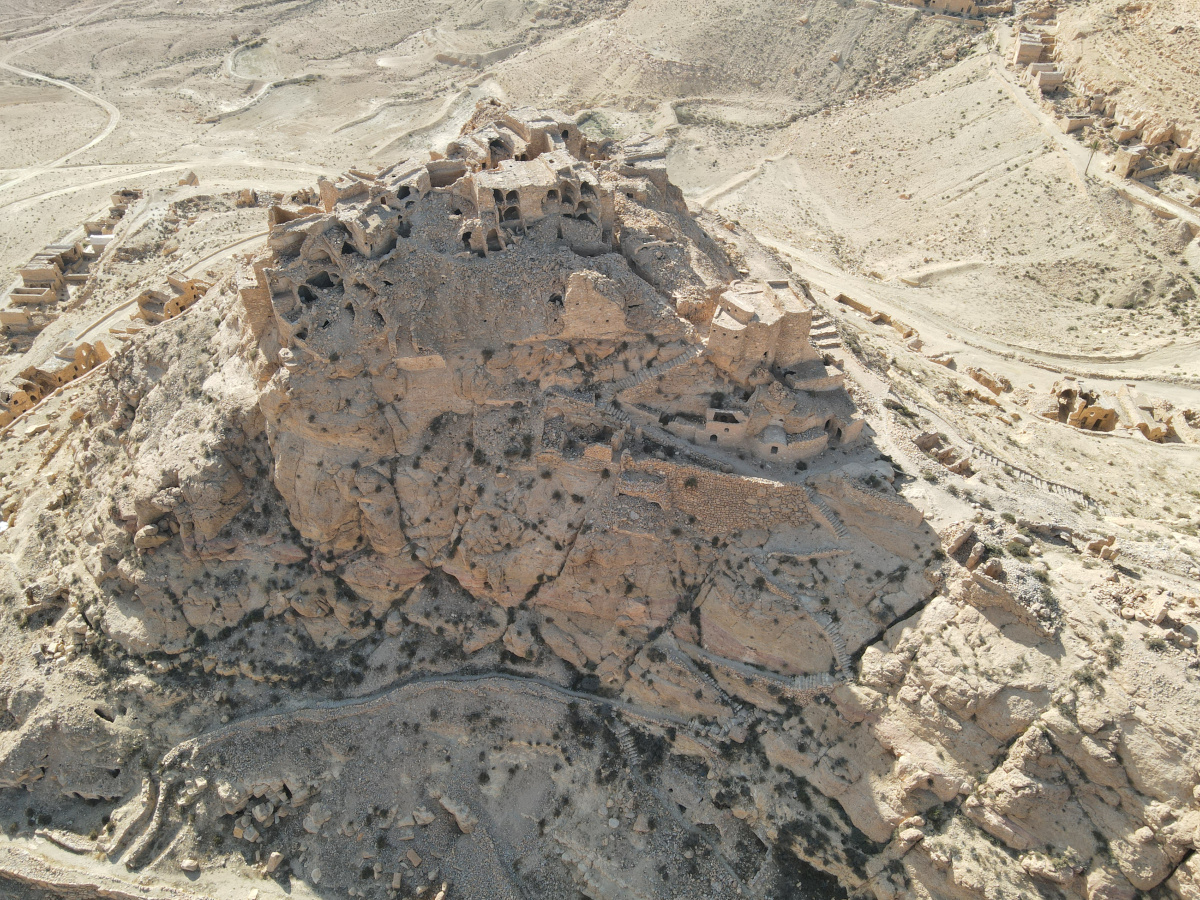
Drone photograph of the ksar with the primary access pathway visible in the shadow in the middle of the image. Photo Credit: ASOR.
Over the past four months, ASOR’s partners at the DWA have worked on an assessment of site conditions and preparation of the documentation that will guide the planned work at the site. Team members collected photographic and drone imagery of the proposed work zones, met with local official and contractors, and began to prepare baseline documentation of the site, including sections, plans, and comparative photography that will be essential to the work to come.
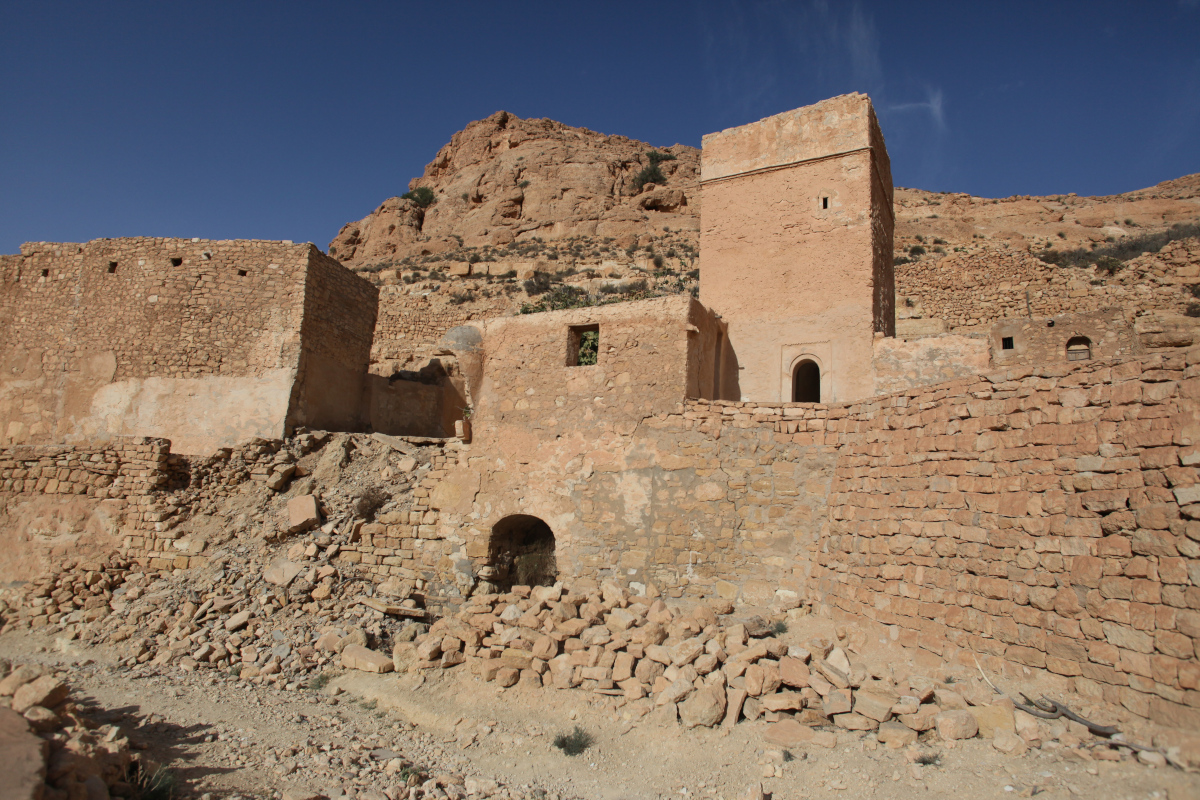
The collapsed exterior of the Jemaa Kerma documented during a November site visit. This mosque will be a focus of stabilization work in 2025. Photo Credit: ASOR.

Project personnel working on the preparation of baseline documentation after field assessment at the Douiret Women’s Association (Wakry Association); from right to left: Will Raynolds (ASOR), Ibtissem Sabri, Assia Sabri, Safwan Tlili. Photo Credit: ASOR.
Members of the DWA also spoke with local residents to assemble the oral, written, and visual history of ancient Douiret. They spoke with residents who worked on previous site restoration efforts that ran from 1997–2002 on parts of the entrance to the ksar as well as the main access path. The site foreman for this project is the father of one of DWA’s current members, further reflecting Ksar Douiret’s multigenerational significance to the Douiret community.
ASOR and its partners at DWA stand at the beginning of a long road to restore access to Ksar Douiret. Keep an eye here to see the next steps.
